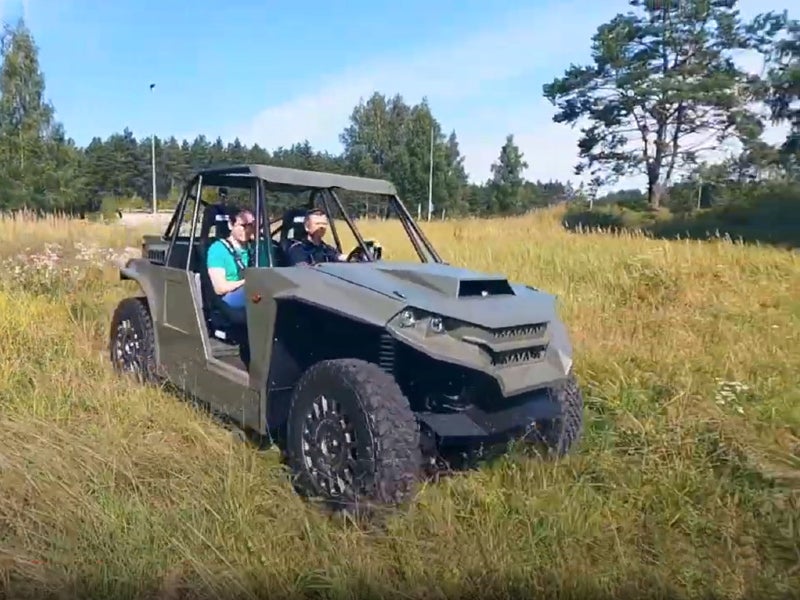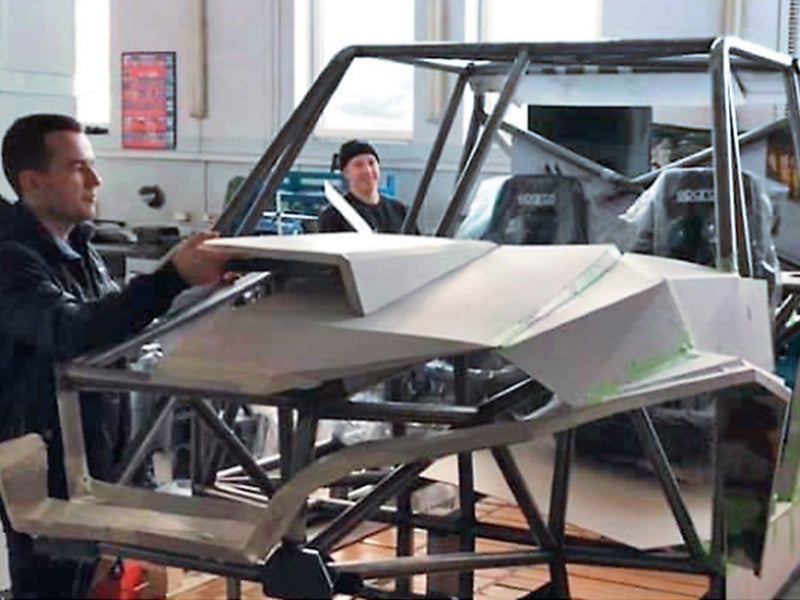Krampus Mk1 is an all-terrain hybrid electric vehicle being developed by Ostara, an engineering and product development company based in Lithuania.
The vehicle is expected to be used in defence and non-military applications such as border security, rescue operations, illegal immigration control, nature conservation and other tasks that require a silent operation.
Development details
Ostara began initial development of the vehicle back in 2017. The design and mathematical modelling were completed in two years, while production of vehicle components started in 2019.
The company received funding from the European Union through its European Regional Development Fund for the development of the vehicle in March 2020.
Ostara signed a memorandum of understanding (MoU) with Provectus Robotics Solutions, a Canadian robotics firm, in December 2020. As per the agreement, Ostara will integrate the remote control and autonomous driving solution (A-Kit) developed by Provectus into the Krampus buggy.
The agreement will also provide Provectus and its parent company Rheinmetall Canada distribution rights of the Krampus vehicle in Canada and the US. The A-Kit is already installed on the autonomous Rheinmetall Mission Master family.
Field tests of the Krampus vehicle were completed in November 2021.
The Krampus Mk1 demonstrator was showcased at the Eurosatory defence exhibition held in Paris, France, in June 2022. The company plans to launch the vehicle between 2023 and 2024.
Krampus Mk1 design details
The vehicle platform has a modular design that separates the frame, drivetrain, battery pack and the diesel generator and enables the replacement of the parts on the battlefield.
The chassis is designed to provide enhanced utility and load carrying capacity.
The all-terrain vehicle (ATV) has a gross weight of 2.5t and can carry two people. It has a length of 3.2m (10.5ft), a width of 1.8m (5.9ft), and a height of 1.9m (6.23ft).
An intelligent drive control system connects the entire system. It provides an optimal control of the internal combustion engine, battery pack, generator, and electric motors.
The Krampus Mk1 can operate on rough terrain and high mountains, and in dungeons and tunnels.
Features of the all-terrain hybrid electric vehicle
Krampus Mk1 will be offered in three modes, namely regular, remote and autonomous. The company aims to eventually develop a fully autonomous Krampus robotic vehicle.
The ATV will have the capability to operate for a maximum distance of 1km in a direct light of sight, when controlled remotely.
Autonomous mode will enable the vehicle to follow a vehicle or a person. The ATV will also be able to detect and overcome obstacles and choose the best path autonomously.
In the autonomous mode, the vehicle will also be able to navigate without the global positioning system (GPS).
The vehicle’s cooling system and stealth capabilities enable a low thermal signature, while the hybrid power system will allow for silent operation.
Payload capacity of Krampus Mk1
The vehicle can carry a payload of 500kg including electronic-optical surveillance equipment, a remote-controlled weapon station, ammunition, and scientific equipment.
It can be equipped with sensors, video or thermal cameras, electro-optics, as well as tools to measure radiation and chemical pollution.
Propulsion
The Krampus buggy is powered by a hybrid electric-diesel engine. It is equipped with two electric motors that are mounted on the front and rear axles and generate 60kW of power.
A 650V, 39kWh high-voltage battery pack provides continuous power supply to the motors. It can be plug-in charged from the AC network using a combined charging system (CCS) type 2 inlet.
An electric generator driven by a diesel internal combustion engine can also be used to charge the batteries. It can be turned on while charging the batteries.
The hybrid propulsion system provides extended range, reduced fuel consumption and the flexibility to use both diesel and JP8 type fuel.
The vehicle provides environment-friendly operation with a low carbon dioxide (CO2) footprint.
Krampus Mk1 mobility details
The ATV can achieve a maximum speed of 120km/h. It can provide a range of 200km when powered by a battery pack alone. The onboard diesel generator in combination with the battery pack further increases its range to up to 1,000km.
The drivetrain includes an all-wheel drive system and offers better traction control in harsh and rugged environments. The vehicle features 18in wheels and a double wishbone suspension system.





